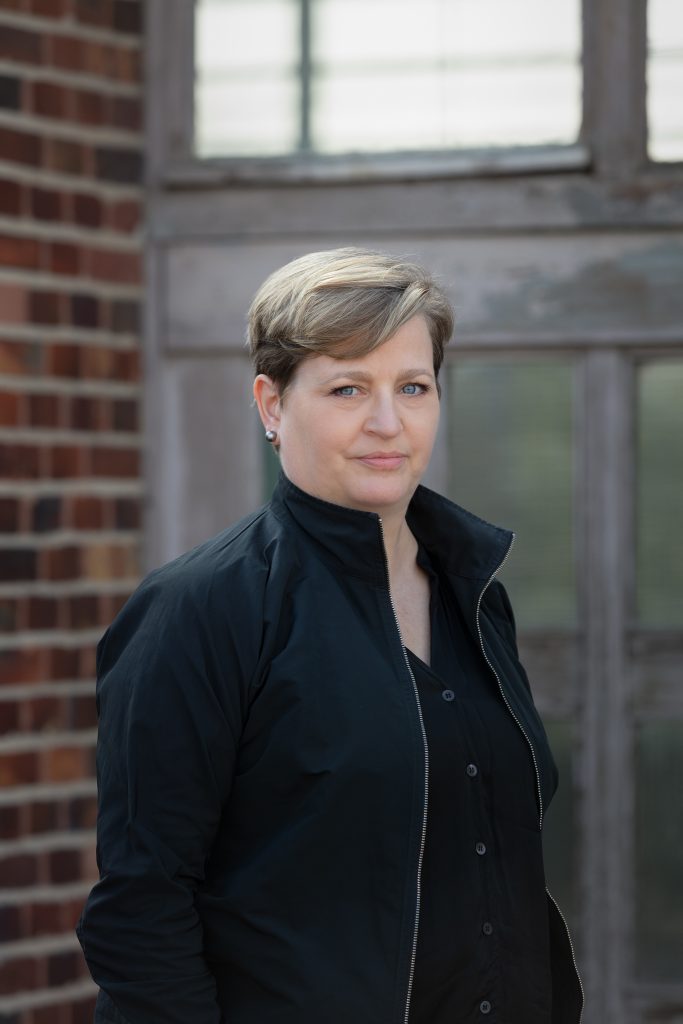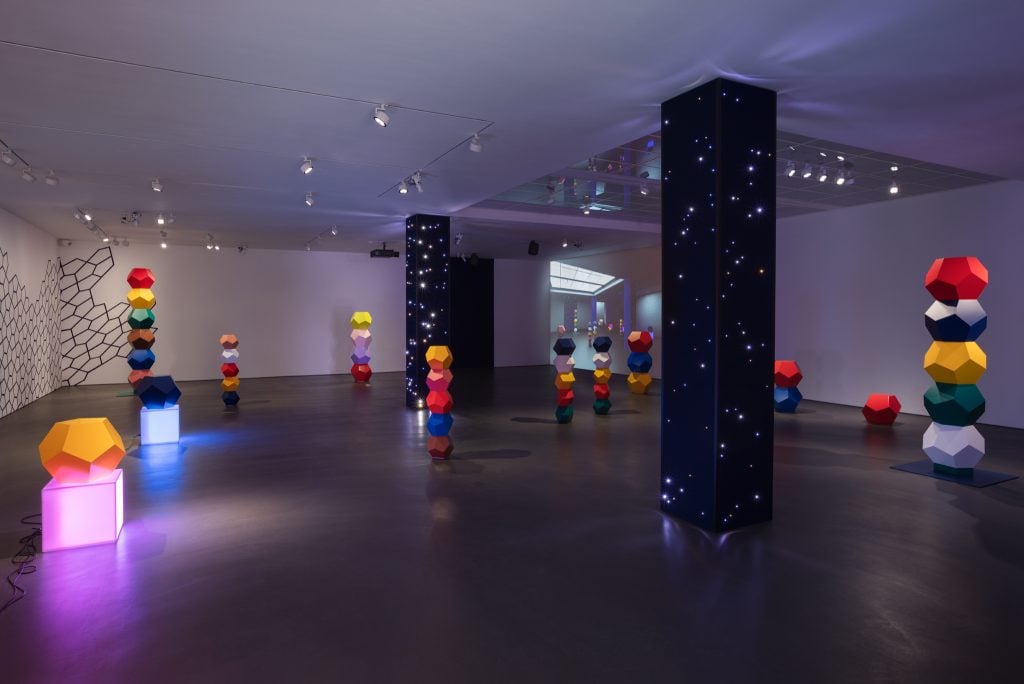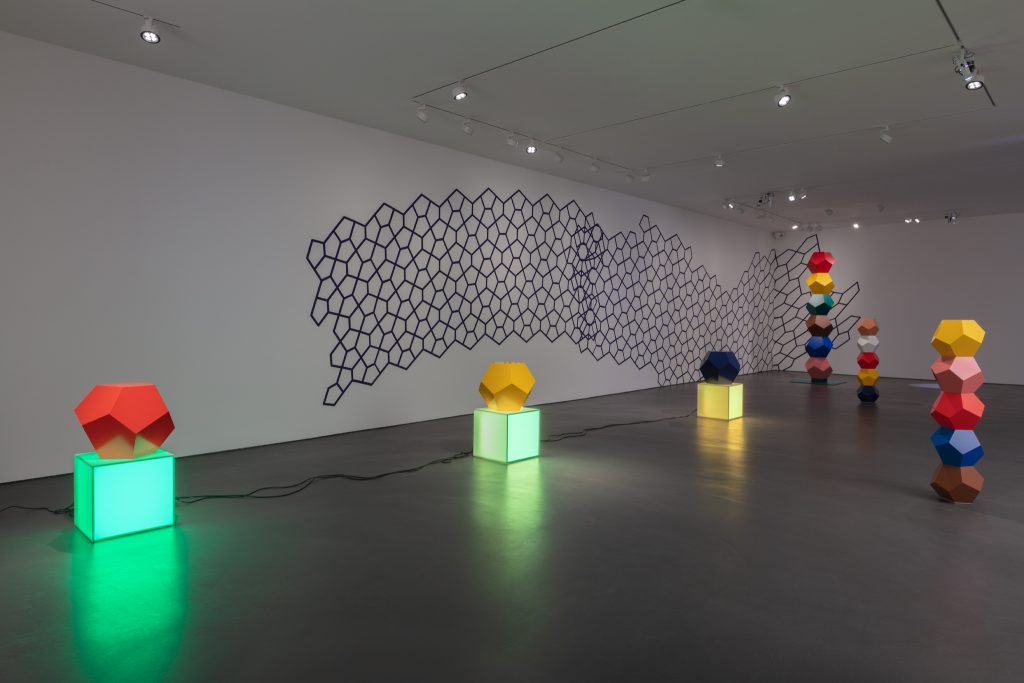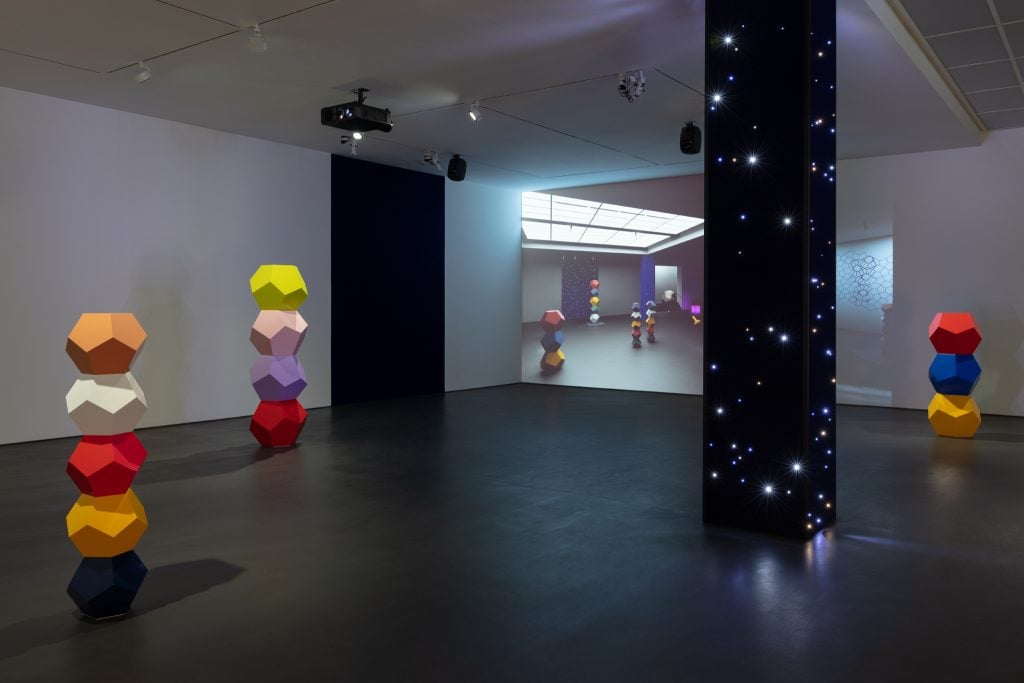Studio Visit
Sculptor Angela Bulloch on Two Things She Needs to Create Her Colorful Sculptures: White Walls and Silence
Artnet News spoke to the Canadian artist about what a day is like in her Berlin-based studio.

Artnet News spoke to the Canadian artist about what a day is like in her Berlin-based studio.

Kate Brown

In an era of continuous screen time and burgeoning virtual and augmented realities, Angela Bulloch’s entrancing, and sometimes destabilizing, sculpture creates a profound visual experience that is akin to the digital, but wholly physical.
The Canada-born artist first came to prominence in the late 1980s while in art school in London, where she was associated with the so-called Young British Artists. Bulloch, who has been nominated for both the Turner Prize and the Preis der Nationalgalerie, has a multidisciplinary practice that edges playfully along the border of the digital and physical spheres.
New sculptures that are part of her acclaimed ongoing series “Pixel Boxes” are now on view at Esther Schipper until December as part of her solo exhibition “Animal Vegetable Mineral,” in which the artist has created a colorful panorama of works, video, and wall pieces.
The show’s atmospheric glow comes from sources of light that influence the optics of the room in a way that is never quite clear. A projected video shows a digitally created image of the room, leaving you a little less sure of what you are seeing. It’s a teasing, flickering, constantly shifting installation that seems almost too perfect to have been made from earthly materials.
Bulloch shared what a typical day is like in her Berlin-based studio.

Exhibition view: Angela Bulloch, Animal Vegetable Mineral, Esther Schipper, Berlin, 2021. Courtesy the artist and Esther Schipper, Berlin. Photo © Andrea Rossetti
What are the most indispensable items in your studio and why?
My wire strippers—I’ve used the same cheap hand tool since the 1980s and would not be without it. The terrace at my studio is also indispensable for taking breaks on.
What is the studio task on your agenda tomorrow that you are most looking forward to?
Today I cleared my desk at my studio and now it’s a perfectly clean slate. Tomorrow I am teaching and I look forward to talk with my students about all the exhibitions we saw together last week.
What kind of atmosphere do you prefer when you work?
Silence and mostly unadorned walls. Music can be okay to work with but I am especially not keen to hear voices or words spoken or sung when I work. Other people’s voices interrupt my own, or my thinking process at least.

Exhibition view: Angela Bulloch, Animal Vegetable Mineral, Esther Schipper, Berlin, 2021. Courtesy the artist and Esther Schipper, Berlin. Photo © Andrea Rossetti.
What trait do you most admire in a work of art? What trait do you most despise?
Direct appeal is always admirable—or when art “speaks” to me. When it’s dull, overtly didactic, or moralistic, I like it not so much.
What snack food could your studio not function without?
Pecans.
Who are your favorite artists, curators, or other thinkers to follow on social media right now?
Eric Troncy, Piper Marshall, and Defne Ayas.
When you feel stuck in the studio, what do you do to get un-stuck?
I step out on the terrace and look far beyond my direct concerns at the studio.

Exhibition view: Angela Bulloch, Animal Vegetable Mineral, Esther Schipper, Berlin, 2021. Courtesy the artist and Esther Schipper, Berlin. Photo © Andrea Rossetti.
What is the last exhibition you saw (virtual or otherwise) that made an impression on you and why?
“Light Off, After Hours, in the Dark,” the Louise Lawler exhibition at Sprüth Magers, Berlin (in fall 2021). It’s an exhibition of photographs of the Donald Judd exhibition at the Museum of Modern Art, New York, but taken with the lights off, after hours, in the dark, just as described in the title of the show. Lawler’s exhibition was cool, critical, layered, dark, and beautiful all at the same time. The images are enduring and her gesture is a powerful one that grows the more you think about it.
If you had to put together a mood board, what would be on it right now?
All the elements in the titles of my recent or upcoming exhibitions. “Animal Vegetable Mineral,” “Rainbow Unicorn Rhombus,” “Paradigme Perpendiculaire.”